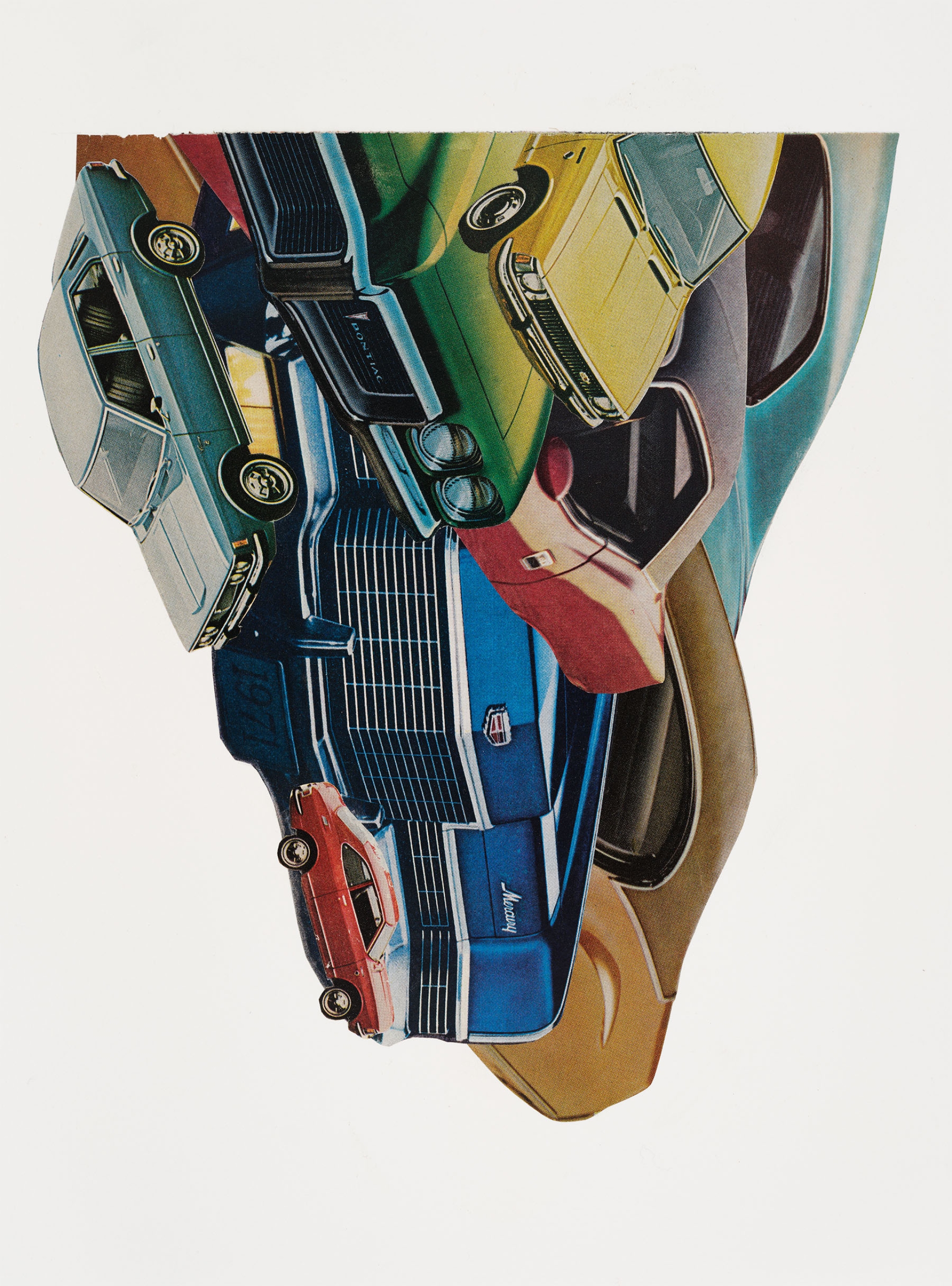collage/ bridgette bramlage
I sometimes catch bits and pieces of the progress in my wife’s studio. She’s an artist. She has stacks of magazine and books from the first half of the 20th century all around the house and sifts through them with a patience created by a sense of wonder. She cuts up tarot and Loteria cards, books of old magic tricks, cigarette advertisements, and glossies of Detroit muscle cars, looking for what they might be saying to each other. I’ve watched her work change over the years, but what I always see is the unconscious process where images collate and come together, allowing a conversation to begin. Parallels and links emerge among images – sometimes a cosmology of shape and line without human signifiers.
In Dime-Store Alchemy, Charles Simic wrote of Joseph Cornell’s collages and assemblages:
“You don’t make art, you find it. You accept everything as its material. Schwitters collected scraps of conversation, newspaper cutting for his poems. Eliot’s Waste Land is collage and so are Pound’s Cantos… The collage technique, that art of reassembling fragments of preexisting images in such a way as to form a new image, is the most important innovation in the art of this century. Found objects, chance creations, ready-mades (mass-produced items promoted into art objects) abolish the separation between art and life. The commonplace is miraculous if rightly seen, if recognized.”
The process reminds me of therapy sessions where both the patient and analyst are both surprised by what came up by the end of the hour. Collage, like a conversation of unedited associations, allows us to catch glimpses and references of our associations that build our worlds. A meaning begins to hint at itself.
Watching my wife piece together her work, I add two haikus:
a story found in scraps
cut and pasted from
thoughts untended
a shape centered on
white paper hints at past and
future images
***

